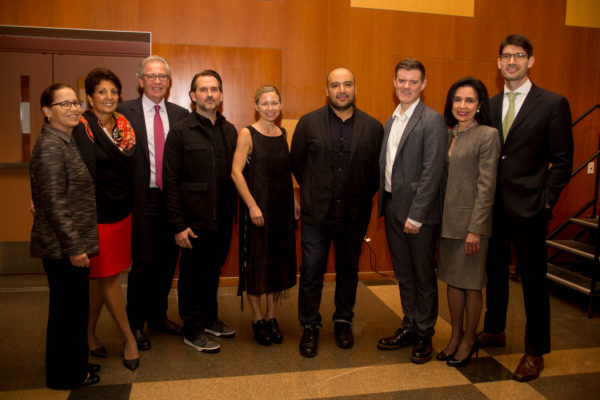
When the Design Entrepreneurs NYC (DENYC) program completed its fourth year on October 1, Jeanette Nostra was smiling. The free, “mini-MBA” course for emerging designers has grown substantially: Prize monies this year for first and second place winners increased from $25,000 to $100,000 and from $10,000 to $50,000, respectively. This is a result of the fashion industry’s commitment to the program, an effort led by the G-III Apparel Group Ltd., where Nostra serves as senior advisor and director. “We needed to turn up the dial on the program and who we recruited,” Nostra says. “This absolutely raised the DENYC’s profile, but more importantly, it meant that the candidates were a little bit more seasoned, and their businesses were perhaps more viable.” This year, Michael Gold, president of YM, Inc., donated $50,000 to the program in honor of his father Israel Goldgrub, founder of YM. (See more details about the DENYC, including profiles of the winners, here.)
Nostra acts as the executive in residence for the New York City Economic Development Corporation and the DENYC. She taught in the college’s Global Fashion Management MPS program for a decade. Since 1981, she has been employed by G-III, a leading manufacturer and distributor of apparel and accessories under licensed brands, owned brands and private label brands, which was the founding sponsor of the DENYC. She served as G-III’s president from 1997-2013.
Recently, Nostra sat down for a short interview about the latest developments in the DENYC, and how she hopes the program will develop in the future.
This year, the G-III Apparel Group Ltd. significantly increased its sponsorship of the DENYC, and through the firm’s leadership, companies as diverse as Macy’s Inc., PVH Corp./Calvin Klein, Kenneth Cole, Cole Haan, and Ivanka Trump also support the program. Why is your company working so hard to help young designers?
Morris Goldfarb, my CEO, is enormously philanthropic. He’s civic-minded, and he’s an entrepreneur down to his shoes. He sees is that this is an investment in our industry.
G-III began as a small business, started by his father. Morris joined it in 1972. He has been the visionary, the strategist, the leading passionate person driving this business for more than 40 years. The company is now a multifaceted apparel group, with brands, wholesale, retail, and licensing. I think G-III is involved because, “What goes around comes around.” You give back; you do.
The whole point of the DENYC is about keeping New York City the vibrant fashion capitol of the world that it is—creating jobs, creating new opportunities, keeping that business alive and thriving by bringing in and supporting new talent.
After four years of stewarding the DENYC, what gaps have you noticed? What do the designers need that they don’t bring to the table?
The designers know how to create product and get it made; the hurdle is getting it to market. They need a showroom, they need sales representation. Very often, these showrooms where the designers pay a monthly fee and then a commission override don’t wind up working for them. This year’s cohort [of DENYC designers] has told us, “We would love a showroom space dedicated to DENYC.” We are exploring that to see if we can make it work as part of the next phase of the program.
How wonderful it would be for me to be able to call the team from Saks or Bloomingdales and say, “I want you to bring your menswear team to Design Entrepreneurs and I’m going to show you six, seven, eight emerging designers in one day, in one space.” It would enable us to aggregate the designers in women’s wear, accessories, menswear, jewelry, and bring in the industry in a much more efficient way.
With the help of G-III and some of the other sponsors, all of us pulling in the right direction, we could bring the retailers to the designers so that they can at least have a point of contact.
I don’t want to call it a “mini-trade show,” but this would be a permanent home for Design Entrepreneurs, and each year the finalists would be given the opportunity to have a showroom for a year. We haven’t worked out all the details yet. This is still in the conceptual phase.
Have you had a favorite student or moment in the four years?
With each and every person that I have mentored, there have been a couple of a-ha moments—and when they have that moment, it’s electrifying—they get it!
Is that when they realize what it’s going to take to do a line, or…
It can be any number of things. One of the students that I mentored during the course of this program had a product—women’s apparel—that was so expensive that it was never going to get traction. And we, together, absolutely rethought the entire pricing, merchandising strategy. And she has implemented that because she sees that that’s much more viable.
One team—this was a women’s accessories business—already had design and production, but they needed the third leg of the tripod, which was marketing and sales. They eventually decided to bring in a third partner, so that between the three of them they could move the project forward. You need that third leg, or the tripod falls over.
What makes you proudest?
Every person who has gone through this program—even the people who didn’t win—has said they found the experience invaluable.
